The content of the article
Cross-stitch is a leader among home hobbies. Needlework of this kind allows you to escape from unnecessary thoughts, focus on creating a beautiful pattern. Skilled craftswomen decorate blouses, tablecloths with an ornament, create unique canvases and wall paintings. It is difficult to imagine how many crosses are made by artists in the process of creating a product. Embroidery is a delicate jewelry, so you need to follow it properly. Consider the important aspects in order.
What is washing for?
It would seem that finished drawing and deal with the end. However, everything is not so simple. In the process of creating a unique masterpiece, especially large sizes, dust is clogged in the fibers of the thread, which spoils the aesthetic appearance of the product.
Also, there are cases when there are traces of the hoop on the canvas; they can be removed only with a wet treatment.In addition, washing eliminates fine fibers, traces of sebum, particles of keratinized epidermis.
Proper treatment with water and cleaning products will put the threads in place, remove traces from marking lines, and give the embroidered pattern brightness and saturation. At the end of the procedure, the canvas will look complete, without any defects.
Preparing embroidery for washing
- First you need to make sure that the embroidery does not disintegrate during the washing process. Turn the product inside out, carefully review the ends of the threads. It is important to immediately notice if they are loosely attached, otherwise the treatment will spoil the product.
- If you are a novice embroiderer, then you probably didn’t unpack the color pattern completely, feeling sorry for your time and energy. The remaining loose threads will easily crawl out, if you do not eliminate the error in time. If possible, dissolve 3-4 crosses so that the length of the thread is enough to fully secure. Modify the remaining area with new fibers from the skein.
- Turn the product over with the front part, remove the thread trimming, pet hair, etc. from it.You can perform these manipulations with a clothing roller or fine tweezers. Such a move must be made to prevent the animal's hair from rolling with floss threads in order to avoid the pellets.
How to wash a cross stitch
Very often, newly-made needlewomen ask themselves the question: “What rules should be followed when washing the cross-stitch?”. To create a pattern pleasing to the eye around the clock, follow the simple recommendations below.
- As mentioned earlier, fasten all the protruding threads from the seamy side; they should not hang down and cling to anything. The same applies to the removal of animal hair and debris. When the preparation is complete, proceed with the wash.
- The temperature of the water in which the product will be cleaned ranges from 36 to 40 degrees, not higher. A larger figure will lead to fading of the pigment, a smaller one will not cope with possible contamination. It is worth recalling that embroidery is a delicate cloth that requires hand washing.
- Prepare a basin or other wide container (a bath or sink will do), as long as the product is in a free state.Pour water into the container at the desired temperature, add detergent for colored clothes, wait until the granules dissolve. If possible, get a gel-based cleaner for subsequent washings; it preserves its color better and leaves no stains.
- When the solution becomes homogeneous, put the embroidery in it, mix the water so that the accessory is completely drowned. Cover the bowl with food film, leave for a quarter of an hour. In cases where there are greasy spots on the surface of the product, soap the sponge and go through it with dirt. To remove the creases from the hoop, take the deformed part of the product in your hands and gently rub the edges together, do not allow the threads to be pulled out of the grooves.
- After the expiration date, when the soaking comes to an end, drain the soapy water and wash the thing in the usual manual way. It is strongly not recommended to rub or twist the fabric, as well as to influence it by other mechanical means, wishing to squeeze out excess liquid.
- Finish the wash by rinsing in contrasting water (first in warm, then in cold). After that, lay the product on a white terry towel, leave to dry naturally.If you want to speed up the process, twist the towel with embroidery so that you get a kind of tube, tube. You should not press on the fabric or turn it into a rope.
- As a rule, embroidery is performed using floss threads, which have an unpleasant feature for leaching pigment. In this case, you need to rinse until the paint stops flowing. To eliminate the fading and partial leaching of color, use table vinegar concentration from 6 to 9%. Add a teaspoon of solution for every 3 liters of water.
How to iron cross stitch
After washing, embroidery must be ironed. The product is ironed while still wet, after all the water is absorbed in a towel. Carry out processing only from the reverse side, otherwise a characteristic gloss will appear in the figure. Place a soft cloth on a flat surface, then place the embroidery face down.
Preheat the iron to the middle mark or set the “Delicate” mode. Spread wet gauze over the inside of the product, first go around the edges, then gradually move to the middle. It is important to understand that the final result depends on the correctness of ironing.
How to wash a cross stitch from wool
Experienced housewives know that wool shrinks during washing. In the case of cross-stitching, this feature will not be beneficial, since the product shrinks to the middle and it cannot be smoothed.
It is important to remember forever, processing is carried out only in cold water, nothing else. At the same time, purchase liquid laundry detergent for woolen products, powder granules leave white residue.
It is useful to use a conditioner for linen, which softens the product and does not allow the threads to pull together. As in the previous cases, it is necessary to dry wool embroidery on a thick terry towel wound in a tube.
With regards to ironing, ironing is performed on a soft substrate. The embroidered accessory is placed face down, and a damp cotton fabric is applied to the back of the side. Do not press the iron too hard, so that the threads iron evenly.
Needlewomen from all over the world think about how to iron the embroidery correctly. The main thing is to choose the optimal temperature of water. If the product is made of floss, pay special attention to the rinsing procedure.Make sure that the pigment is washed out completely. In the case of woolen appliqués, an important role is played by the presence of liquid powder and conditioner for such things.
Video: how to wash and dry cross stitch

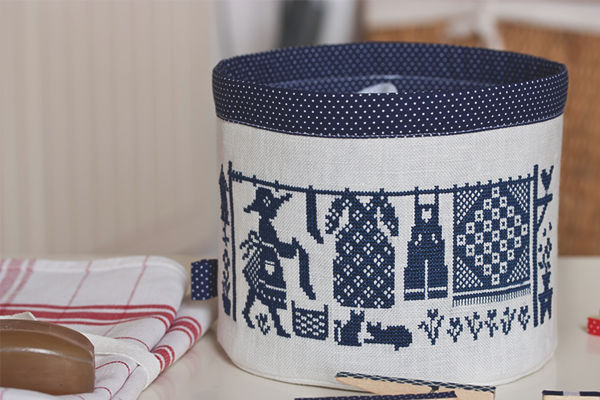
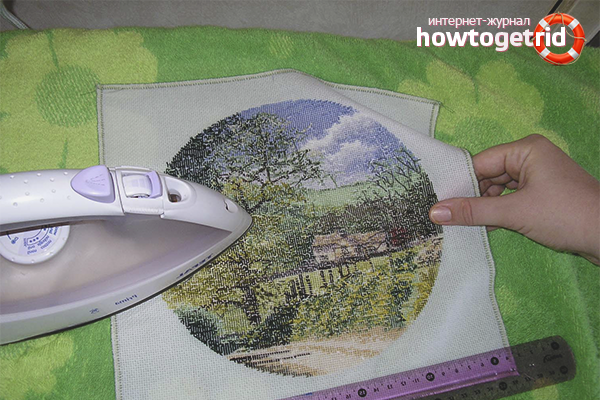



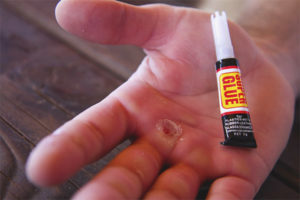
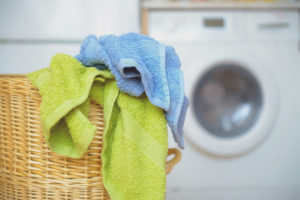
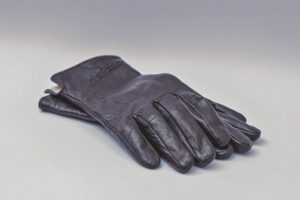


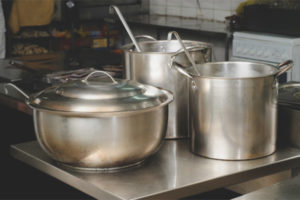
To send